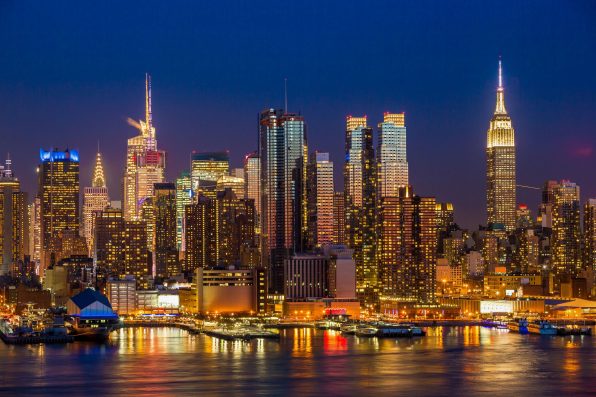Exposure To Light Pollution At Night May Increase The Risk Of Alzheimer’s Disease Development

Even at night, the lights always stay on in some places. Street lamps, roadway lighting, and illuminated signs can make roads safer and discourage crime. However, excessive lights at night can lead to health and environmental consequences.
When the lights never go off, this creates light pollution. In a new study, researchers have identified a correlation between nightly light pollution and Alzheimer’s disease (AD) in the United States. Exposure to light pollution at nighttime may increase the risk of developing Alzheimer’s.
“We show that in the U.S., there is a positive association between AD prevalence and exposure to light at night, particularly in those under the age of 65,” said Dr. Robin Voigt-Zuwala, the first author of the study and an associate professor at Rush University Medical Center.
“Nightly light pollution—a modifiable environmental factor—may be an important risk factor for AD.”
The researchers studied data from satellites to determine the average intensity of lights at night in the U.S. between 2012 and 2018. They ranked the lower 48 states from the lowest to the highest nighttime light intensity.
The results revealed that the prevalence of Alzheimer’s was more strongly linked to nightly light pollution than other disease factors for people aged 65 and older.
Some of the disease factors included obesity, depression, alcohol abuse, and chronic kidney disease.
Other risk factors, such as stroke, high blood pressure, and diabetes, had a stronger correlation with Alzheimer’s disease than light pollution.
However, for people under the age of 65, a higher intensity of light pollution at night was associated with a greater prevalence of Alzheimer’s than any other risk factor that was examined in the study.

blvdone – stock.adobe.com – illustrative purposes only
This suggests that younger people are more vulnerable to the effects of light exposure at night. It is unclear why, but it could be attributed to individual differences in light sensitivity.
“Certain genotypes, which influence early-onset AD, impact the response to biological stressors, which could account for increased vulnerability to the effects of nighttime light exposure,” Voigt-Zuwala said. “Additionally, younger people are more likely to live in urban areas and have lifestyles that may increase exposure to light at night.”
The researchers hope their findings can help raise awareness about the potential risks of being exposed to light at night.
For those living in areas with high light pollution, there are some easy lifestyle changes that can be made, such as wearing eye masks to sleep or implementing blackout curtains.
The impact of indoor light exposure was not analyzed in this study, but the researchers said that blue light likely has the biggest effect on sleep.
People can use blue light filters, switch to warm light, and install dimmers in their homes to reduce indoor light exposure.
The study was published in the journal Frontiers in Neuroscience.
Sign up for Chip Chick’s newsletter and get stories like this delivered to your inbox.
More About:News





